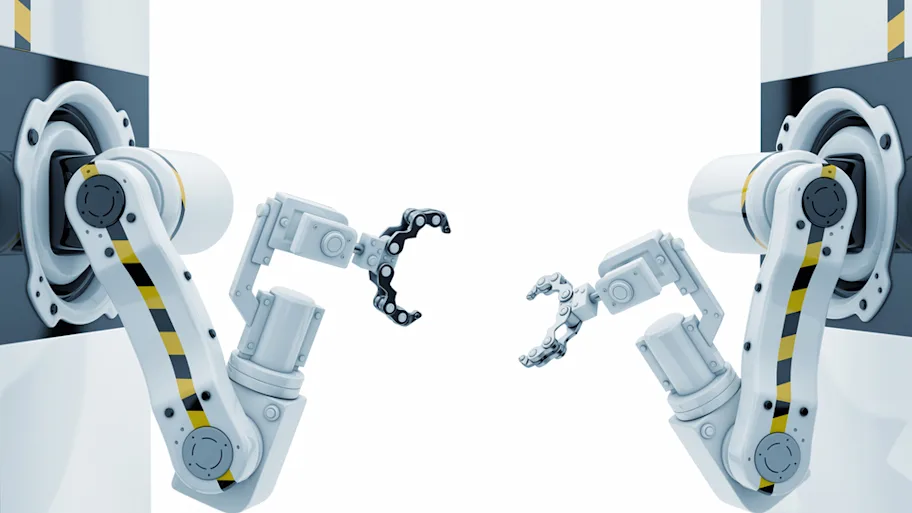
- Science News
- Robotics and AI
- Six degrees of freedom in current robotics research
Six degrees of freedom in current robotics research

Public perception of robotics and automation research is often shaped by sensational news instead of reports of active researchers. Frontiers in Robotics and AI had the privilege to attend ICRA 2015 and engage in conversations with the cutting edge scientists and engineers of robotics in 2015. The main discussion points of the roboticists at the conference crystallized along the areas below – many of which brought up varying perspectives over research freedom and the future of robotics.
1) Market-controlled research agendas
One facet of discussion was how investors and companies urge robotics to move towards directly applicable topics from theoretical investigations. While it is an excellent idea to push research in the direction of solving existing problems, a fully market-controlled research agenda would pose a high risk on projects that have no immediate return of revenue. As an extreme example, low-cost 3D printed robotic arms designed for children would rank lower than military drones in such contest. Lowering costs by letting the market drive economically viable research is beneficial but only if ethical considerations are properly taken into account.
The market has already contributed in surprising ways to shaping the field: the world would be poorer without the introduction of the Segway just to name the most popular example of this trend. Universities and research institutes as well put more and more emphasis on nurturing technology transfer with great success. The increasing influence of the market will hopefully continue to provide a constructive, rather than a destructive, force in cooperation with society.
2) Focus on direct applications
If we subtract revenue from this picture and focus on direct applications only, the first thing we can observe is the influx of researchers towards robotics from different domains. Their paths are often initiated by a question in their home domain, to which existing and emerging robotics applications can provide the answer. Diversifying the skill set of robotics as a field and broadening its views is a must to continue to fuel the expansion of current applications.
Women are somewhat underrepresented in the community due to an educational bias, to which several educational programs have reacted but further development is expected to happen over the next decade.
3) Spread knowledge to unblock progress
When mentioning direct applications, such as medical assistive devices and rescue and disaster robotics, we cannot look away from the heated debate on workforce rearrangement that is brought on by examples of robots that outperform humans in low qualified and monotonous tasks. Roboticists approach the debate through a positive attitude while fully being conscious of the risks. They put the emphasis on the power of knowledge to find appropriate answers: the more potential issues are identified, the more research is to be done to ensure that fear and incomplete information does not block progress.
4) Understand risks and ourselves through research
The field of robotics provides one of the most beautiful examples of research deepening understanding on “understanding” itself. As medical professionals need to know how our own cells work in order to cure disease; teaching a robot requires a deeper-than-ever level of conscience on human functions. Motion, perception, communication and robot-robot interaction are just a few areas where we can both improve our research and also learn about ourselves.
Research presented at the conference furthermore demonstrates that robotics is already applicable to prove or disprove theories beyond robotic applications: it is an excellent model terrain for evolutionary biology and ecological interactions with the potential to conquer even further domains.
5) Involve non-experts
Involving non-experts by sharing the passion of robot construction with young generations has been very successful through robotic challenges and tech camps. As a consequence of the dramatic nature of most robotics news, which tends not to provide a full picture of the field, there is an increasing amount of effort invested in informing the adult public as well. Researchers have been turning to social media and are gradually focusing on appropriate wording to highlight the relevance of their research to a wider audience.
6) Open up the field
Not only is the general public encouraged to get involved in the dialogue with researchers, governments, policymakers and economists also warmly welcome discussions focusing on realistic trends.
As the domain has incredible potential and is definitely going to have a profound impact on society, this element of realism is often exchanged with overexcitement or unjustified reservations. Due to the societal potential of robotics, we believe that further fostering this exchange is key in creating the foundation of full trust in the domain.
We are grateful for all the input at ICRA 2015: presentations of the conference and discussions with researchers from a wide variety backgrounds and career stages.







